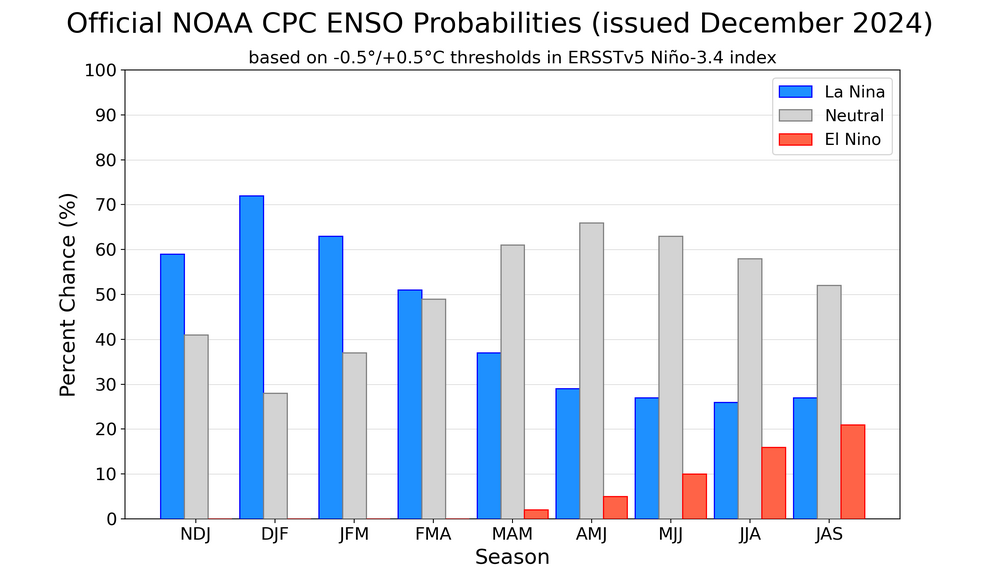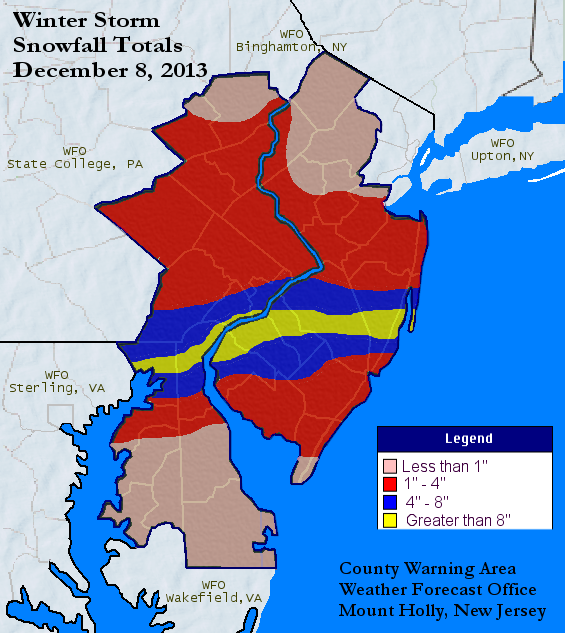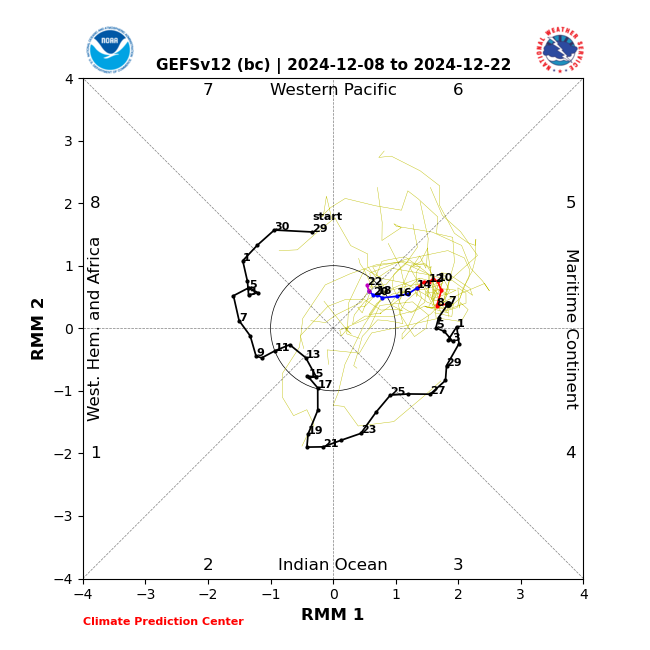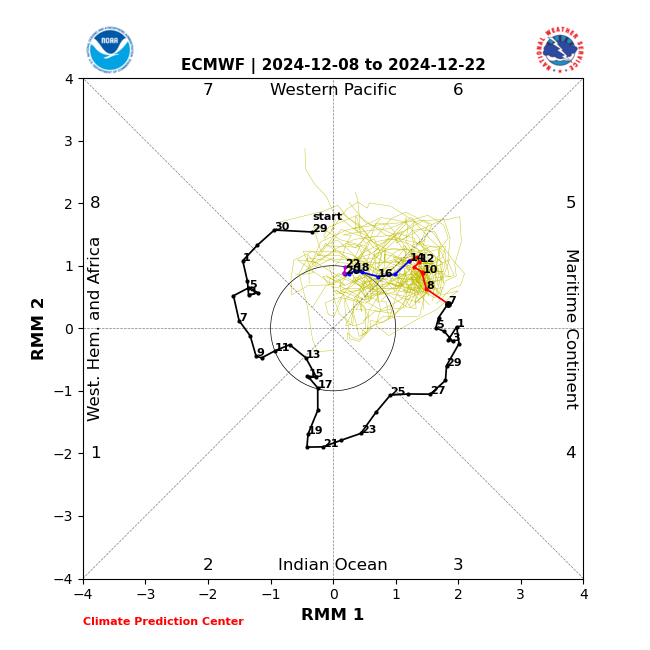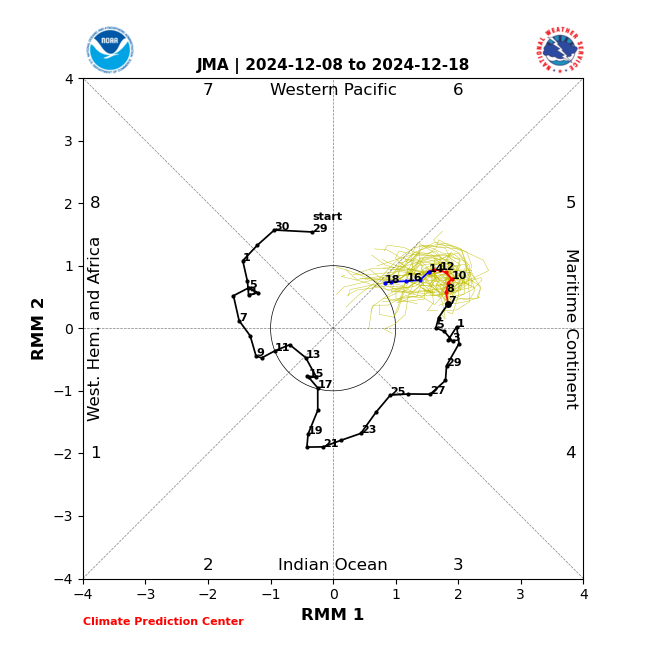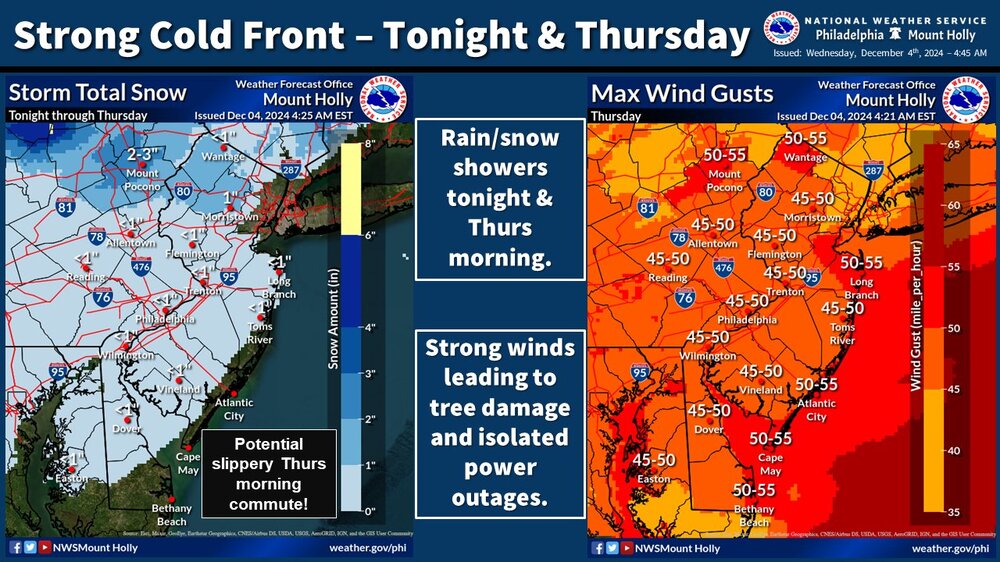
PhiEaglesfan712
Members-
Posts
1,057 -
Joined
-
Last visited
Content Type
Profiles
Blogs
Forums
American Weather
Media Demo
Store
Gallery
Everything posted by PhiEaglesfan712
-
2024-2025 La Nina
PhiEaglesfan712 replied to George001's topic in Weather Forecasting and Discussion
-
2024-2025 La Nina
PhiEaglesfan712 replied to George001's topic in Weather Forecasting and Discussion
September was still cool where I lived, so the unrelenting warmth was really only October and November. The most recent fall with that temperature profile was 2020. There really wasn't a torch that winter, but we did have a notable snow shut-off the 2nd half of December and almost all of January. February was the cold and snowy month that winter. -
2024-2025 La Nina
PhiEaglesfan712 replied to George001's topic in Weather Forecasting and Discussion
12-13 torched more in December than in January. Also notable is that November 2012, with the aftermath of Hurricane Sandy, was below average temperaturewise for most of the East. This is opposite of what happened in 2024. 05-06 seems to be the best fit so far this year. November temperature/precip profile (as well as the beginning of December), active late hurricane season, and possible late la nina almost fits this year perfectly. However, if we don't get a la nina, don't discount 92-93. That would be the only time in the last 50+ years where a strong el nino didn't transition to a la nina. But I think you're probably right about next year. 93-94 and 13-14 look like early leads for a 2025-26 analog. -
2024-2025 La Nina
PhiEaglesfan712 replied to George001's topic in Weather Forecasting and Discussion
Possible backloaded winter: -
E PA/NJ/DE Fall 2024 Obs/Discussion
PhiEaglesfan712 replied to Rtd208's topic in Philadelphia Region
Now, why couldn't this happen during our cold pattern?- 1,105 replies
-
- tropics
- heavy rainfall
-
(and 5 more)
Tagged with:
-
2024-2025 La Nina
PhiEaglesfan712 replied to George001's topic in Weather Forecasting and Discussion
You never know. The MEI was at -0.7 for JJ/JA, and I was expecting it to drop into moderate or even strong la nina territory for AS/SO. The numbers ended up being -0.6 for AS and -0.5 for SO. -
2024-2025 La Nina
PhiEaglesfan712 replied to George001's topic in Weather Forecasting and Discussion
MEI just updated, and is back down to -0.7 for ON. This is the 5th straight bimonthly value of -0.5 or below for the MEI, solidifying a weak la nina on there. -
2024-2025 La Nina
PhiEaglesfan712 replied to George001's topic in Weather Forecasting and Discussion
Yeah, it kind of had a 1992-93 flavor to it. That was a backloaded winter, most notable for the mid-March blizzard. Interestingly enough, that one had a cool first third of December, and ended with normal temperature departure. Here was the first third of that December: 1992-12-01 53 34 43.5 1.0 21 0 T 0.0 0 1992-12-02 46 39 42.5 0.3 22 0 T 0.0 0 1992-12-03 48 33 40.5 -1.4 24 0 0.00 0.0 0 1992-12-04 42 31 36.5 -5.1 28 0 0.04 0.0 0 1992-12-05 41 33 37.0 -4.3 28 0 0.14 T 0 1992-12-06 38 25 31.5 -9.6 33 0 0.00 0.0 0 1992-12-07 41 34 37.5 -3.3 27 0 0.00 0.0 0 1992-12-08 42 30 36.0 -4.5 29 0 0.00 0.0 0 1992-12-09 37 24 30.5 -9.7 34 0 0.00 0.0 0 1992-12-10 47 25 36.0 -4.0 29 0 0.97 T 0 The rest of the month: 1992-12-11 52 43 47.5 7.8 17 0 2.25 0.0 0 1992-12-12 44 36 40.0 0.5 25 0 0.17 0.0 0 1992-12-13 46 36 41.0 1.8 24 0 T 0.0 0 1992-12-14 43 30 36.5 -2.5 28 0 0.00 0.0 0 1992-12-15 38 26 32.0 -6.7 33 0 0.00 0.0 0 1992-12-16 47 36 41.5 3.0 23 0 0.03 0.0 0 1992-12-17 60 42 51.0 12.8 14 0 0.47 0.0 0 1992-12-18 47 34 40.5 2.5 24 0 0.00 0.0 0 1992-12-19 50 30 40.0 2.3 25 0 0.00 0.0 0 1992-12-20 49 35 42.0 4.5 23 0 0.18 0.0 0 1992-12-21 40 26 33.0 -4.3 32 0 0.00 0.0 0 1992-12-22 52 33 42.5 5.4 22 0 0.00 0.0 0 1992-12-23 48 33 40.5 3.7 24 0 0.06 0.0 0 1992-12-24 42 22 32.0 -4.6 33 0 T 0.0 0 1992-12-25 37 20 28.5 -7.9 36 0 T T 0 1992-12-26 37 25 31.0 -5.2 34 0 0.00 0.0 0 1992-12-27 34 19 26.5 -9.5 38 0 0.00 0.0 0 1992-12-28 43 31 37.0 1.2 28 0 0.10 T 0 1992-12-29 50 42 46.0 10.4 19 0 0.05 0.0 0 1992-12-30 51 45 48.0 12.6 17 0 0.15 0.0 0 1992-12-31 63 47 55.0 19.7 10 0 0.00 0.0 0 This is proof that even if December goes snowless, all isn't lost. Heck, January 1993 torched before things turned colder and snowy in February and most of March. -
2024-2025 La Nina
PhiEaglesfan712 replied to George001's topic in Weather Forecasting and Discussion
It was close to average. On par with years like 2007 and 2016. It certainly wasn't several degrees below average like 2005 or 2010. -
2024-2025 La Nina
PhiEaglesfan712 replied to George001's topic in Weather Forecasting and Discussion
The big difference, though, from the several previous winters is that we actually have a December that opened cold. That hasn't happened since 2017. While that doesn't guarantee anything (we could still get something like 2007-08), at least I can be optimistic that the winter isn't going to be cooked like 2019-20 or the last few years. Yeah, I'm not looking for a 2010-11 type season to happen, but a 2005-06 redux is certainly doable. -
-
E PA/NJ/DE Fall 2024 Obs/Discussion
PhiEaglesfan712 replied to Rtd208's topic in Philadelphia Region
I think a 2005-06 redux is the most likely solution. That was a borderline cold neutral/weak la nina season, which had an active hurricane season, a warm November, and cold start to December. I foresee a very long warm pattern, but the cold returns in the back half of the winter. Hopefully, we do get a Feb. 11-12, 2006 type snowstorm.- 1,105 replies
-
- tropics
- heavy rainfall
-
(and 5 more)
Tagged with:
-
2024-2025 La Nina
PhiEaglesfan712 replied to George001's topic in Weather Forecasting and Discussion
The fact that there were -2 to -4 temp departures for most places in the East in May and June 2023 will always make me believe that 2022-23 had the potential for cold and snow. We haven't got extended cold during that part of the season since June/July 2009. What makes the cold of May and June 2023 even more odd is that there was no cold/snowy winter to precede or succeed it (like the summer of 2009 cold was in between the cold and snowy winters of 2008-09 and 2009-10). -
2024-2025 La Nina
PhiEaglesfan712 replied to George001's topic in Weather Forecasting and Discussion
-
2024-2025 La Nina
PhiEaglesfan712 replied to George001's topic in Weather Forecasting and Discussion
In winter. May and June 2023 were -2 to -4 temperature departure in many places in the East. -
E PA/NJ/DE Fall 2024 Obs/Discussion
PhiEaglesfan712 replied to Rtd208's topic in Philadelphia Region
Yeah, that's exactly what happened in spring/summer 2002. The last thing we need right now is a 2001-02 redux. Thank goodness for the pattern change in fall 2002, and the snowy winter of 2002-03 that got us out of that drought.- 1,105 replies
-
- 1
-

-
- tropics
- heavy rainfall
-
(and 5 more)
Tagged with:
-
E PA/NJ/DE Fall 2024 Obs/Discussion
PhiEaglesfan712 replied to Rtd208's topic in Philadelphia Region
I don't like 2002 as an analog for this year. That was an el nino. Plus, the signs of a very cold and snowy winter were there early on. We don't have any of that this year. I think 2005 is a better fit analog for this year. That was a very warm November, which suddenly turned cold in December. If I remember correctly, all but one day in the first two-thirds of December 2005 was below average. Then, it turned warm, and January was an absolute torch. The cold returned for the final two-thirds of February, starting with the Feb. 11-12, 2006 snowstorm.- 1,105 replies
-
- tropics
- heavy rainfall
-
(and 5 more)
Tagged with:
-
E PA/NJ/DE Fall 2024 Obs/Discussion
PhiEaglesfan712 replied to Rtd208's topic in Philadelphia Region
Only if you're under 23 or so. There is precedent for those who remember what happened following the very warm and snowless winter of 2001-02.- 1,105 replies
-
- 1
-

-
- tropics
- heavy rainfall
-
(and 5 more)
Tagged with:
-
2024-2025 La Nina
PhiEaglesfan712 replied to George001's topic in Weather Forecasting and Discussion
March-August 2023 was a cool stretch of months here in the mid-Atlantic. May and June were the brunt of the cool weather here, with temperature departures of -2 to -4 in many locations. That is very rare for that time of year. Of course, it was too late for snow to fall. But if we can get a -2 to -4 temperature departure in January and February, instead of May and June... -
E PA/NJ/DE Fall 2024 Obs/Discussion
PhiEaglesfan712 replied to Rtd208's topic in Philadelphia Region
I remember those great December 5 storms during the 2000s. Three when I was in high school (2002, 2003, and 2005), and another when I was in community college (2007). Of course, 2005 was the Eagles infamous 42-0 loss on MNF.- 1,105 replies
-
- 1
-

-
- tropics
- heavy rainfall
-
(and 5 more)
Tagged with:
-
E PA/NJ/DE Fall 2024 Obs/Discussion
PhiEaglesfan712 replied to Rtd208's topic in Philadelphia Region
Finally changing your tune, huh? I told you there wasn't going to be a snowstorm on Christmas and the drought wasn't ending any time soon.- 1,105 replies
-
- tropics
- heavy rainfall
-
(and 5 more)
Tagged with:
-
2024-2025 La Nina
PhiEaglesfan712 replied to George001's topic in Weather Forecasting and Discussion
3 out of 4 times, it turned out to be correct. Winter never returned after December 2019, December 2022, and February 2024. (To be fair, I was one who bailed on the extremely cold/snowy February 2024. I thought the snow mid-January would become a cold/snowy 2nd half of winter like 2006-07, but when February started out warm, I knew the analog was toast.) The only one that turned out wrong was December 2021, which of course, had the famous mismatch in January 2022. -
2024-2025 La Nina
PhiEaglesfan712 replied to George001's topic in Weather Forecasting and Discussion
I had Torch January predicted back in early September. That's the one thing I haven't wavered from in my winter forecast. December was always going to be a tough month to predict. I had a feeling it was going to start out cold, but I've waffled back and forth on when the warm-up will be. -
E PA/NJ/DE Fall 2024 Obs/Discussion
PhiEaglesfan712 replied to Rtd208's topic in Philadelphia Region
- 1,105 replies
-
- tropics
- heavy rainfall
-
(and 5 more)
Tagged with:
-
2024-2025 La Nina
PhiEaglesfan712 replied to George001's topic in Weather Forecasting and Discussion
Torch January was the easiest thing to predict for this winter.

